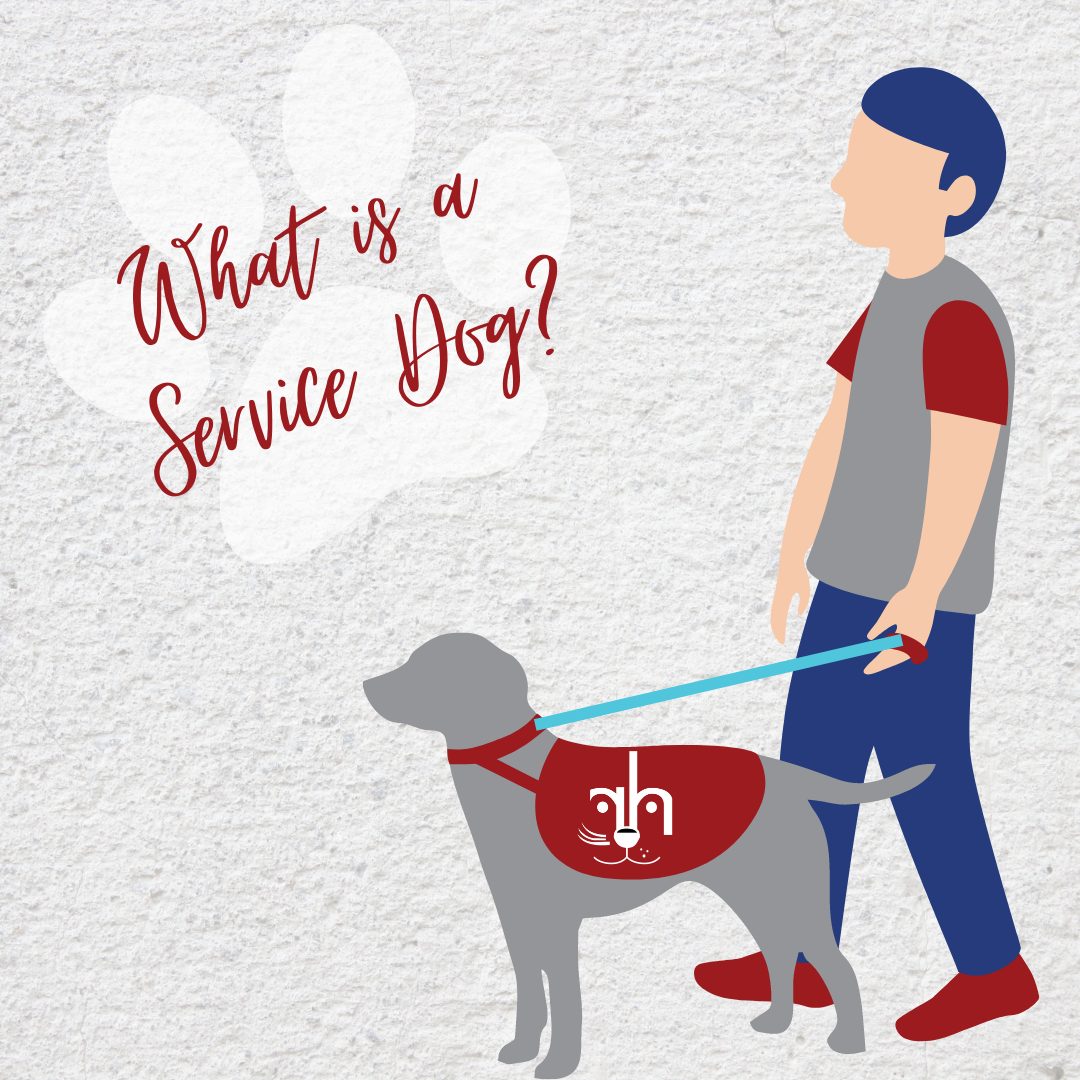National Service Dog Month is celebrated every September to honor the hardworking dogs who dedicate their lives to performing extraordinary work in many different fields. While most of us have heard of service dogs, not many people are truly familiar with the laws around what a service dog is, and what it isn’t. Service dogs are unique in that they provide their handlers with the capabilities to perform certain tasks or function in ways they might not otherwise be able. So what classifies a dog as a service dog — and how does it differ from an emotional support dog?
First, let’s establish what a service dog actually is. According to Title II and Title III of the Americans with Disabilities Act (ADA), a service dog is “any dog that is individually trained to do work or perform tasks for the benefit of an individual with a disability, including a physical, sensory, psychiatric, intellectual, or other mental disability.” The tasks these working dogs are trained to perform must be related to their handler’s disability, and tasks performed can vary widely depending on the needs of the handler. Some examples of different types of service dogs include guide dogs for the blind, hearing/signal dogs for the deaf or hard of hearing, seizure response dogs, psychiatric service dogs, sensory/social signal dogs, or mobility assistance.
Sometimes a service dog is very obviously recognized and it is quite clear to determine what tasks the dog is trained to perform. On the other hand, there are times it can be difficult to distinguish whether the dog is truly a service animal or not. Depending on the needs of the handler, a service dog’s tasks may not be obvious, even when the dog truly is hard at work. Because of this, it is important to know the only two questions the ADA allows to be asked when determining if a dog is a service animal or not:
1. Is the animal required because of a disability?
2 What work or task is the animal trained to perform?
No questions about the details of the disability can be asked, nor can it be asked to provide proof of certification, training, or licensure of a service animal. The dog does not need to be wearing a vest, harness, tag, or any other identifying item to prove it is a service dog. In fact, there is no registration of a service animal required by the ADA. If you see a company offering to get your dog registered as a service dog, it’s nothing more than a waste of money. Unfortunately, these “registrations” can cause issues surrounding service dogs because they can be purchased by anyone for any dog — trained or not. This can lead to misrepresentation of service dogs when a “registered service dog” comes into a business, when in reality, the dog is an untrained pet. The ADA states, “There are individuals and organizations that sell service animal certification or registration documents online. These documents do not convey any rights under the ADA and the Department of Justice does not recognize them as proof that the dog is a service animal.”
Now that we have a clearer understanding of what a service dog actually is, let’s discuss emotional support dogs. An emotional support dog does not have the same privileges as a service dog. The ADA defines this clearly: “While Emotional Support Animals or Comfort Animals are often used as part of a medical treatment plan as therapy animals, they are not considered service animals under the ADA. These support animals provide companionship, relieve loneliness, and sometimes help with depression, anxiety, and certain phobias, but do not have special training to perform tasks that assist people with disabilities. Even though some states have laws defining therapy animals, these animals are not limited to working with people with disabilities and therefore are not covered by federal laws protecting the use of service animals. Therapy animals provide people with therapeutic contact, usually in a clinical setting, to improve their physical, social, emotional, and/or cognitive functioning.” Rules and regulations surrounding pets do not apply to service animals because they are working dogs, not pets, but can still apply to emotional support animals.
Although emotional support animals do play a valid and important role in many people’s lives, they are not the same as a service dog. Likewise, service dogs in training do not possess the same protection under federal laws as an actual service dog. Dogs must be fully trained before laws regarding service dogs apply. For more information about the difference between service dogs and emotional support animals, visit the ADA’s guide to service animals and emotional support animals and frequently asked questions.

